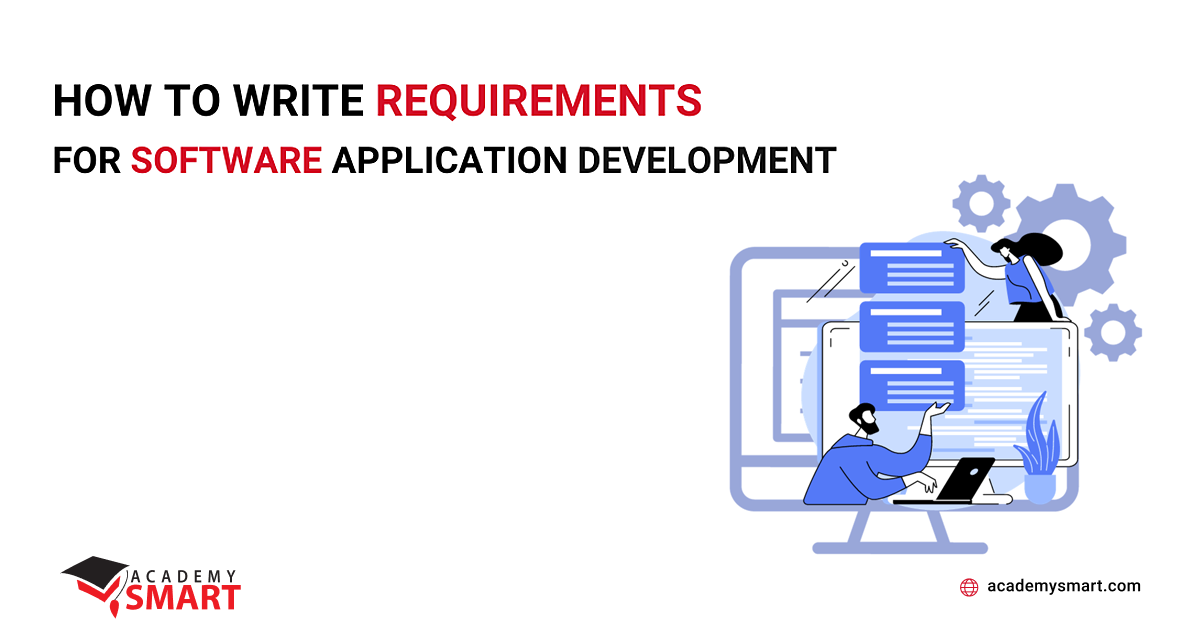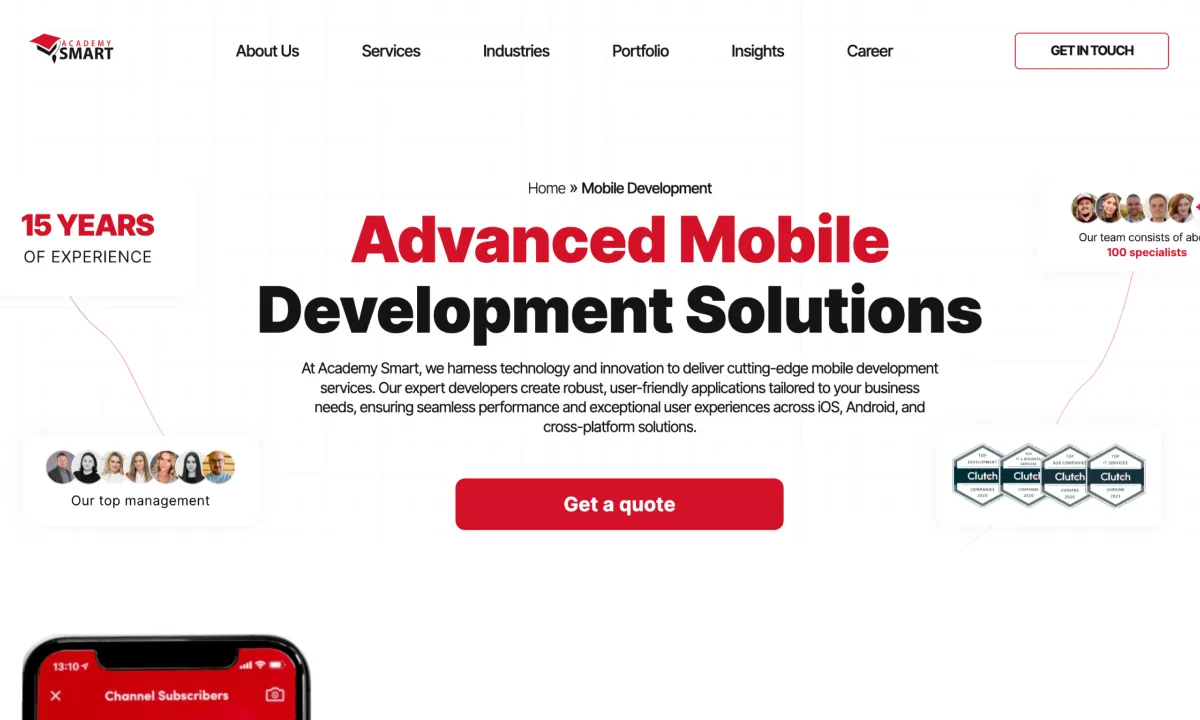
How to Write Requirements for Software Application Development
Contents
Creating a software application that meets user expectations and business objectives requires a well-defined roadmap. The cornerstone of this general plan is the Software Requirements Specification (SRS).
This document outlines the software’s functionality, design, and constraints, serving as a critical reference for the entire project team. So, it needs meticulous attention to its compilation, as inadequate or unclear requirements are a common source of project delays, cost overruns, and even failure.
This article focuses on how to write software requirements in a simple, clear, and meaningful way.
What is SRS in Software Engineering
An SRS, or Software Requirements Specification, is a comprehensive technical document that abstracts a software project’s intended functionality, features, design, limitations, and objectives. It defines how the application should operate and how the development team should construct it. The SRS acts as a blueprint for application building, providing detailed information on the desired software system’s behavior and characteristics.
The SRS document is essential for several reasons:
- Project clarity
It describes all potentially ambiguous aspects of custom software development, ensuring a shared understanding of the project’s scope, objectives, and functionality. - Project roadmap
It acts as a project roadmap, helping stakeholders understand how the application should be created, how it should function, and what features it should include. - Evaluation
It assists investors and stakeholders in estimating the software’s prospects and making informed decisions. - Efficiency
It helps software engineers define tech stack, the programming languages, plan their work, and streamline development. - Communication
The SRS tool helps developers, designers, and QA specialists understand the software’s technical necessities.
The creation and management of an SRS typically fall under the responsibility of all stakeholders, including software developers who use the SRS to guide the software’s technical implementation and clients who are critical in reviewing and approving the specification to ensure it meets their expectations. Business Analysts are typically instrumental in gathering, documenting, and validating stakeholder requirements, ensuring that the Software Requirements Specification example accurately reflects the enterprise’s objectives. Project managers oversee the SRS creation process, ensuring it aligns with set goals, timelines, and budgets.
To ensure an efficient app development process, a Software Requirements Specification template should exhibit the following features:
- Correctness: the document must accurately reflect product functionality and specifications at any time, including all features requested by the client.
- Unambiguity: it has to avoid any confusion regarding the interpretation of requirements, using equal abbreviations and conventions throughout the document.
- Prioritization: requirements should be classified by importance and urgency of release.
- Verifiability: each requirement must be quantifiably measured to determine whether the final software fulfills it.
- Modifiability: the SRS has to ensure easy updates and modifications without impacting other requirements.
- Traceability: it should draft each requirement’s origin, making it easy to reference and track changes during development.
The tools provided by text processors like Microsoft Word or Google Docs or team collaboration apps like Confluence and LaTeX are usually sufficient to create your software requirements specification template. However, to compile complex technical documentation for an enterprise-level project, it is convenient to write requirements for software in specialized environments designed for SRS creation, such as Jama Connect, IBM Engineering Requirements Management DOORS, or Helix RM.
An SRS is fundamental in software engineering, providing a clear, comprehensive, and structured description of a software project’s requirements. Based on the system requirements document, programming experts create excellent and profitable applications, like the examples from our portfolio.

Academy Smart’s portfolio
Software Requirements Specification Template: Typical SRS Components
A Software Requirements Specification document follows a structured template that includes various sections, each serving a specific purpose. Here is a description of the main elements you might find in typical SRS examples.
Introduction
This section provides an overview of the document’s intention to define the software’s requirements and guide the development process. It outlines the boundaries of the SRS scope, specifying what it covers and doesn’t.
It summarizes the software project, offering essential information about the business context and how the software aligns with the enterprise’s aims.
General description
This paragraph describes the expected functionality of the software. It typically outlines what users intend to achieve with the software, defining the types of users and their roles and highlighting the issues the application aims to address from the user’s perspective.
It also identifies any limitations or constraints that might impact the development process. If applicable, it may mention other systems with similarities or relationships.
Functional requirements
This part details the specific functions and features the software must deliver to meet user needs. It describes how the software will be used in different scenarios, providing context for its functionality. Here, you may include the use case model to illustrate how various actors interact with the software and sequence diagrams to visualize interactions between system components and actors.
Performance requirements
This component outlines the software’s performance expectations, including speed, responsiveness, and resource utilization. It’s common and highly recommended to articulate the Key Performance Indicators (KPIs) for software development needed to achieve the desired performance levels here.
Interface requirements
This spec section describes how users will interact with the software, specifies how the software interfaces with hardware components, addresses requirements related to data communication and discusses interactions with other software systems or components.
Other non-functional attributes
The document typically includes various non-functional requirements that ensure the software’s quality and usability, such as security, reliability, maintainability, portability, extensibility, reusability, and application compatibility.
Schedule
The Software Requirements Specification example may include a timeline or schedule for the application development.
Appendices
The final part of the document usually contains a glossary of definitions, acronyms, and abbreviations to clarify the terms used in the document. It may also provide any external references, documents, or sources that were consulted during the creation of the SRS.

A template of SRS in software engineering
Academy Smart as your Offshore Software Development Partner
Our IT outstaffing agency provides offshore staff augmentation services and outsourcing custom software development. We have operated in Western Europe, America, the Middle East, and Africa markets for over 13 years, delivering over 100 complex web and cloud enterprise applications for desktop and mobile devices.
Our team comprises over 100 qualified IT specialists with diverse experience in various business industries. Hiring our developers for your in-house team will significantly enhance its creativity and productivity.
Do you need strong programming expertise in JavaScript, Python, or Java and professional mastery of their frameworks? Contact us to get the best talents for software development needs.
Frequently Asked Questions: Writing Software Requirements Specification
What is the difference between a SRS and a functional specification?
A Software Requirements Specification describes what the software should do from a user’s perspective, focusing on the “what” and “why.” In contrast, a Functional Specification provides detailed technical information on “how” the software will achieve its functions, often including algorithms, data structures, and implementation details.
How do I prioritize the requirements in my SRS?
To prioritize requirements in your SRS specification, consider factors such as business value, user needs, regulatory compliance, and project constraints. Use the prioritization frameworks to rank requirements by importance.
Book a free consultation

Reach out to start talking today!











